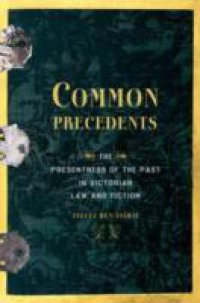Common Precedents maintains that precedent constitutes a sophisticated and powerful mechanism for managing social and cultural change. Reading major novels by George Eliot, Anthony Trollope, and Wilkie Collins, this analysis of law and literature shows that precedential reasoning enjoyed widespread cultural significance in the nineteenth-century as a means of preserving a sense of common history, values, and interests in the face of a new heterogeneous society. An in-depth analysis of Victorian law reports argues that precedential reasoning enables the recognition of the new and its assimilation as part of a continuous past. The binding force of precedent, which ties judges to decisions made by their predecessors, also functions as the binding element of an always shifting commonality, pulling it together in the face of rupture and dispersion. By appearing to bring the past seamlessly into the present, the form of legal precedent became material. It was vital to the preservation of a sense of commonality and continuity crucial to the common law and Victorian legal culture. But the impact of precedent extended beyond legal practices and institutions to the culture at large, and especially to its fiction. Ben-Yishai's monograph argues that understanding the structure of precedent also explains fictional form: how fictionality works, its epistemology, and the ways in which its commonalities are socially constructed, maintained, and reified. Common Precedents thus presents a cultural history of the forms of precedent and an intricate study of the formation of social convention.


















